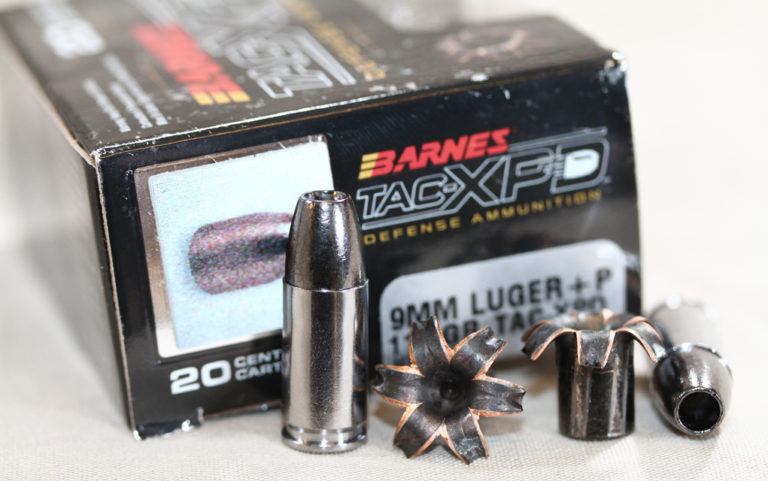
Offering a high-capacity magazine and enough velocity to expand bullets, you’ll find more high-tech 9mm ammo, from more makers, than any other cartridge.
How to choose the best 9mm round for personal defense:
- 9mm bullet weights range from 115 to 147 grains and velocities from 1,200 to 1,000.
- The 9mm has the advantage of higher capacity without enlarging a firearm's grip.
- Gun type goes a long way in determining the preferable load.
- 9mm ammo can be divided into three classes: light, medium power and supersonics and heavyweights.
- +P and +P+ are best reserved for full-sized pistols.
Invented in 1904, the 9mm Parabellum came about because the German army couldn’t bring themselves to adopt a .32 pistol – the 7.65×21 Luger. So, Georg Luger opened up the bottlenecked case of that 7.65 as much as he could and, viola, the 9mm Parabellum came about.
It is a hot number, with an MAP of 36,000 PSI. The standard bullet weights range from 115 to 147 grains, with velocities from just under 1,200 for the 115s and just under 1,000 for the 147s.
As a compact cartridge, the 9mm has an advantage that larger or longer cartridges cannot offer: a high-capacity magazine, with a double stack of cartridges, does not become too large a magazine and grip for the average shooter to handle. This offers a significant increase in capacity. Where a 1911 pistol in .45 offers eight rounds in a magazine, a 9mm magazine in the same-size pistol doubles that. And, the higher operating pressure means it can generate enough velocity to expand bullets.
Load Up On 9mm Ammo Knowledge:
- How to Choose the Best 9mm Ammo for Home-Defense
- Best Caliber for Self-Defense – 9mm, .40 S&W or .45 ACP?
- Medium-Bore Comparison: .38 Special vs 9mm
These two advantages caused the 9mm to be the main focus of bullet improvements. Some might say, “Sure, because it needed it,” but I see it as ballistic advantage waiting to be reaped. As a result, you will find more hi-tech bullets in 9mm, from more makers, than any other cartridge. Even in the hottest loadings, in a not-ultra-compact pistol, it is manageable for the average shooter, and this is another advantage. If it is manageable, people will learn to manage it. If it can be fun they’ll find the fun.
With the 9mm, the convergence of all the advantages created a product that now is going to re-set the law enforcement landscape, moving many agencies back from the .40 to the 9mm.
The big problem in selecting the best 9mm ammunition is determining what platform you will be using it in.
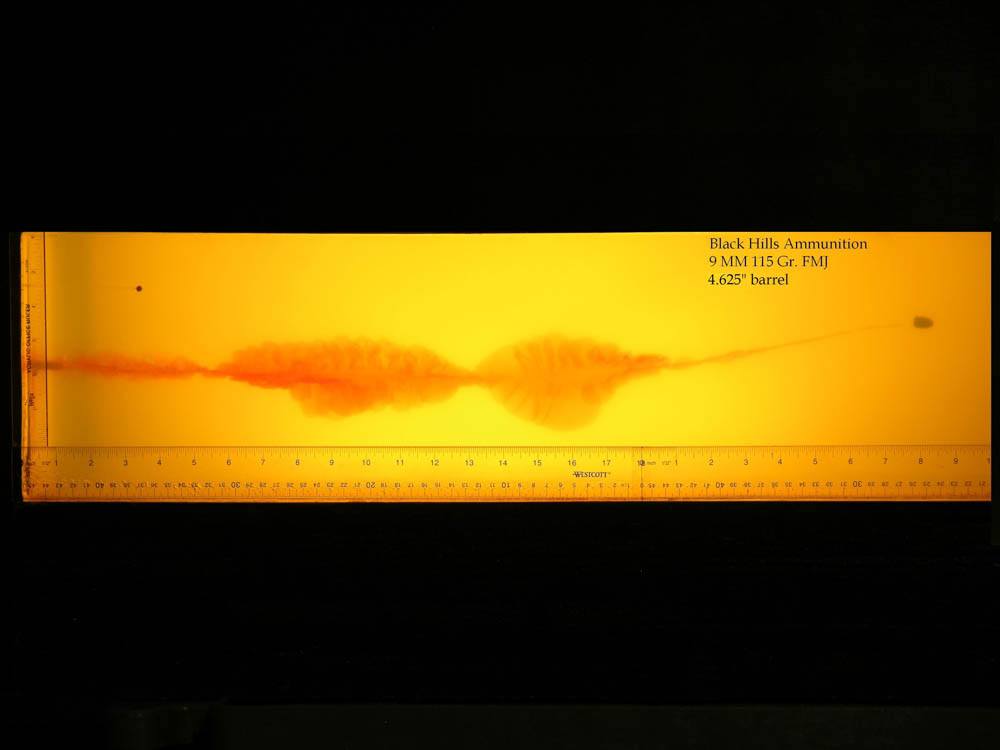
For instance, the +P and +P+ loads are best performers when launched out of a full-sized gun. So, using a Glock 17 or 34, a full-sized Government Model or similar other big 9mm, you get all the benefits of the velocity. Using the same ammo in an ultra-compact Kel-Tec is simply making excessive noise, beating up your hands and not getting the velocity you thought you were. Oh, you’ll get more than the standard ammo would deliver, but not so much more that it’s worth all the drama, noise, flash and recoil.
The 9mm Parabellum seems to be the cartridge the FBI tests were made for. It has enough velocity to punch through the various barriers and still have speed enough to expand on the other side. The 147-grain bullet is so long (it barely fits in the case, with room for powder) that you could expand it to double its diameter, and it still has enough length of bullet cylinder left to support the expanded bullet.

It is soft in the lighter loads and manageable in the hottest loads, so it is accurate. It used to not be accurate. When the U.S. Army and Air Force began testing in the early 1980s, to replace the “worn out” 1911s with something new, something 9mm, they found that the 9mm ammunition of the time wasn’t as accurate in new pistols as the then-current .45 ammo in the “worn out” 1911s. This temporarily stopped the pistol program, and initiated a crash program to develop match-grade 9mm ammo, then started the tests again.
Now, we have accurate 9mm because it is all accurate.
Old habits and old customs die hard. Old attitudes die hardest of all. The attitude of “real cartridges start with the numeral 4” do not take into account the fact that a lot of people just don’t want to deal with, or can’t handle, the size of a “4” pistol and the recoil it brings with it. For them, the 9mm is plenty good enough.
The trick is finding the firearm that works for you, and then (and only then) selecting the load that works in it. Picking a load and making it fit a “suitable” handgun is going about it backwards and asking for trouble. Not to pick on Kel-Tec (they make fine compact pistols), but starting with a +P or +P+ load and then trying to manage it in an ultra-compact pistol is just doomed to failure.
To that end, the 9mm can be divided into three areas.
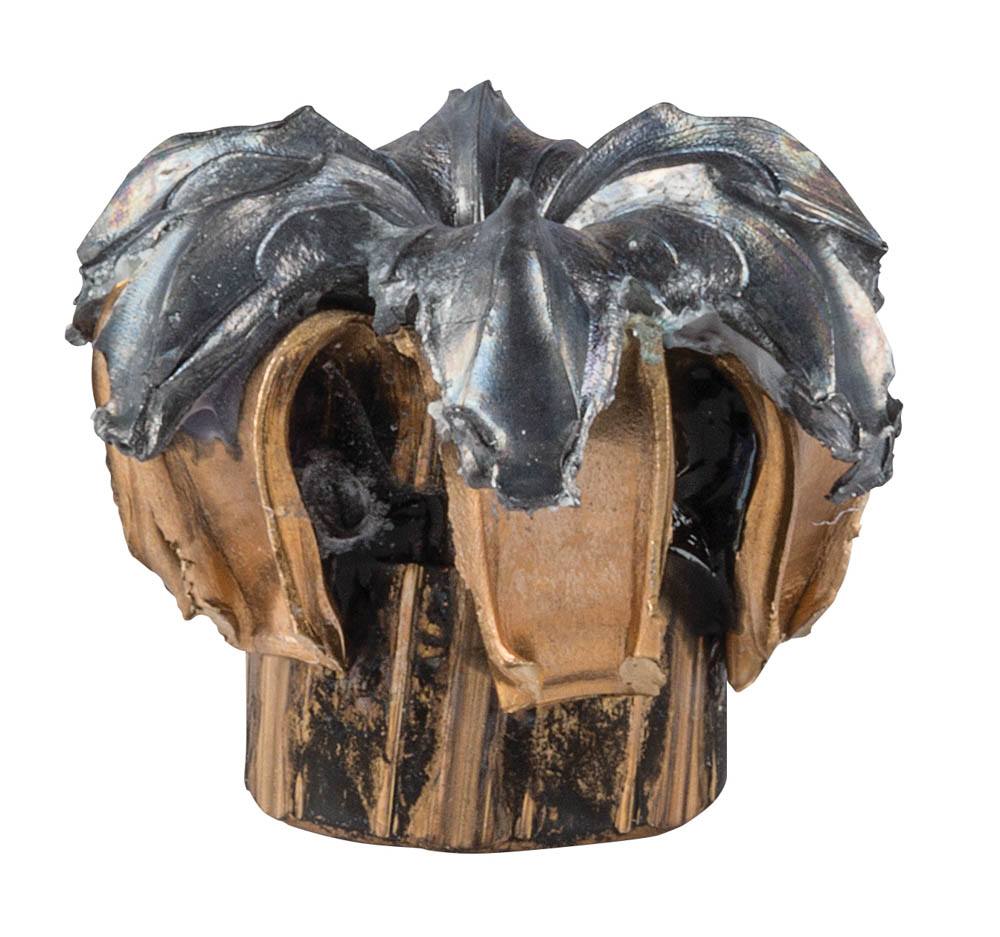
Light Loads
These would be the Hornady Critical Defense loads and similar low-recoil loads, such as Federal HST offerings, the Barnes TAC-XP (all-copper bullets don’t need as much velocity to perform) and others. They offer as much performance as can be had, without going to the full FBI performance and recoil that the other end of the spectrum entails. Why would you use such a load? As explained, because you are loading it into an ultra-compact pistol and you don’t want the extra recoil, for no gain, that hotter ammo would provide.
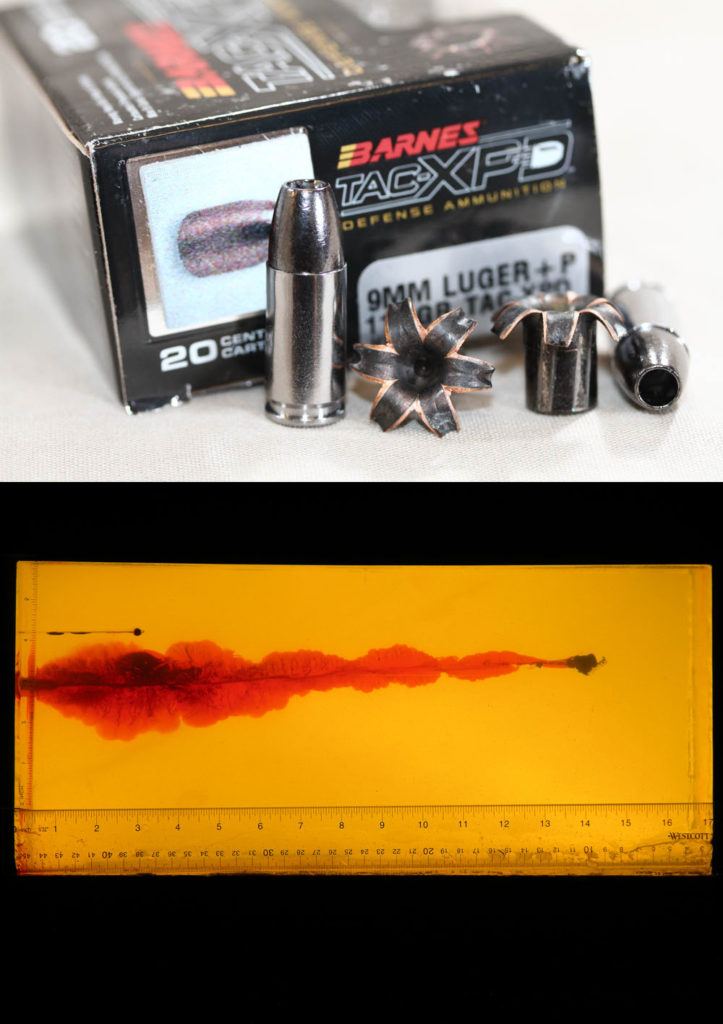
Medium Power
The middle ground would be standard-weight ammunition in normal velocities, such as a 124-grain JHP at the normal 9mm velocity of 1095 fps. One reason to select such a load would be simply that your ultra-compact pistol does not run reliably with a ”softy” 115-grain or a heavy but slow load.
One of the advantages of the 9mm is the huge variety of pistols and ammunition to be found. That is also one of the disadvantages, as the more combinations you have, the more you can find that don’t work.
This is the firearms variation of the old “Doctor, doctor” joke.
“Doctor, doctor, it hurts when I move my arm like this.”
“Then don’t move your arm like that.”
If your desired carry pistol does not shoot well or is unreliable with a particular load, move on to some other load. There are plenty of good ones, don’t get hung up on “there can be only one.” Select something else, something that works.
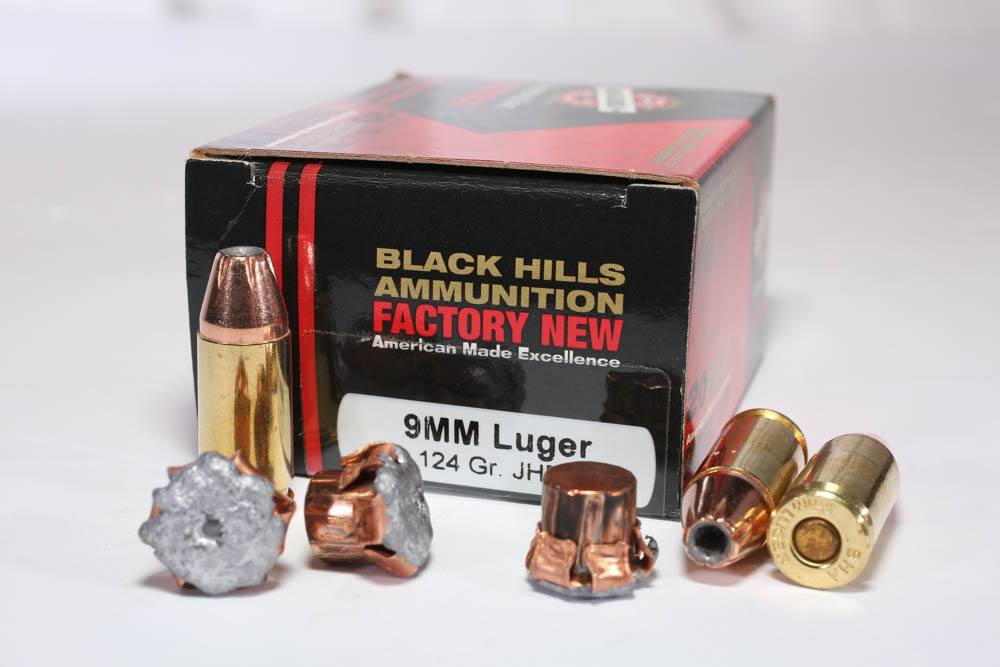
Supersonics And Heavyweights
Last are the full-out, pull-out-all-the-stops loads that fully comply with and even crush the FBI scoring method. Here, we have two options.
One is the lightweight bullet at the absolute screaming velocity the case can muster. For that, you’re looking at something like the Winchester Kinetic or the new, resurrected Super Vel. This will push 90- to 115-grain bullets at supersonic velocities.
A soft-shooting but lightweight bullet is the Federal Guard Dog. At only 105 grains it isn’t the lightest load, but for those who don’t want or can’t use hollowpoints, the expanding metal jacket bullet is just the answer.
The other options here are the heavies, the 147-grain JHPs that manufacturers push to just under 1,000 fps. They are both subsonic and expansionist.
What do you pick? Pick what you like, and what your pistol likes.
An example of the heavies is the Winchester PDX1, in 9mm it is 147 grains. I first encountered it while doing my TV show, and we got a carton of ammo fresh off the loading line. The range had a test car nearby, so I loaded 9mm and tried a round through the windshield. It went through the windshield, through the cardboard target in the driver’s seat, the headrest, and caromed off the back shelf and out the back window, taking window trim with it.
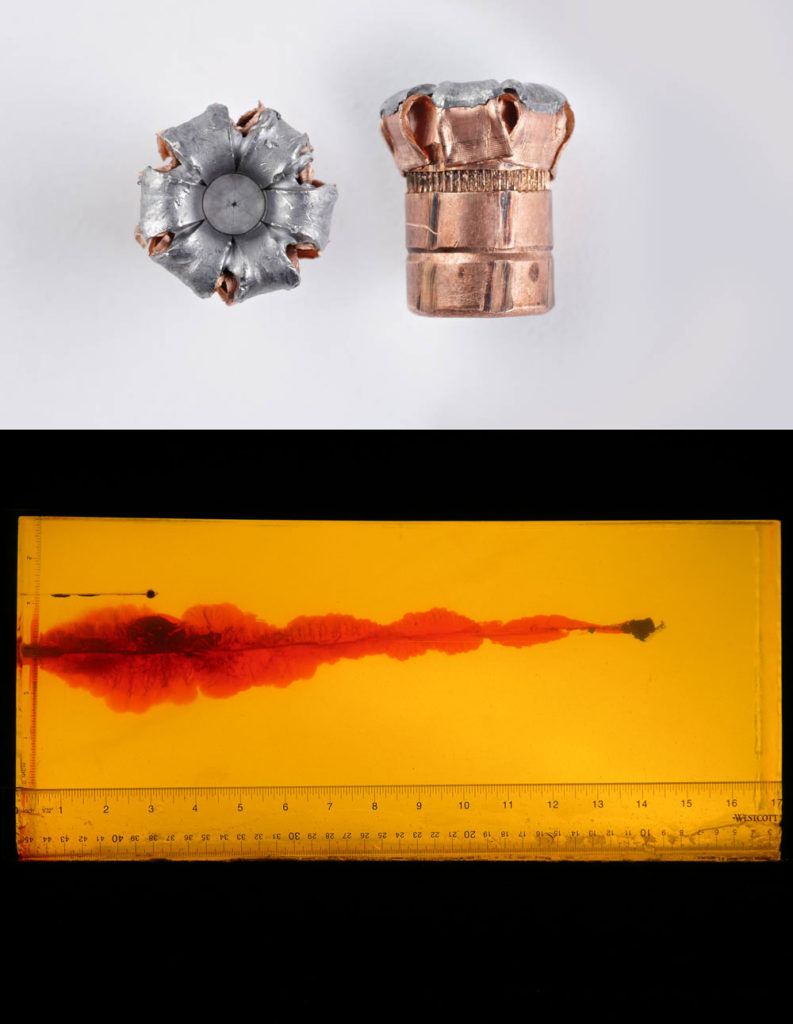
Hornady delivers much the same performance with their Critical Duty load, a 135-grain bullet that is +P and stout to shoot, for a 9mm.
That’s the kind of performance that the modern, bonded bullet in a 9mm can deliver. And it is why I am not giving a list of recommended rounds or options in the 9mm chapter or many of the subsequent chapters.
All bonded bullets in the modern choices will perform in a similar fashion. That is why they are expensive, and why they have stiff recoil.
The trick is to pick the one that you are comfortable with, that shoots accurately in your handgun, and that feeds reliably. Because they are all so good, the work of picking one over the other is just not worth it for the great bunch of us. For a police department, willing to go through the herculean labors of picking one (or more likely, four or five potential, good-enough-the-best) rounds, fine.
Me, I can’t be bothered, and I do this for a living. I’ll pack whatever the gun I’m packing shoots well, and be happy.
Honey Badger
The idea of a non-expanding bullet that stops and does not over-penetrate is new. One of these is the Honey Badger, a fluted all-copper bullet. It does not care about barriers, because the shape is not changed by punching through a barrier. It does this at amazingly mild recoil levels. It is new, and it will likely be the thing of the future for bullets. Time and testing will see.
In a gelatin test of the Honey Badger, it penetrates the full 18 inches and does so at a subsonic velocity, with a 125-grain bullet. Wow!
+P & +P+
Should you, or shouldn’t you? That depends. Do you want the extra performance it will deliver? Because either will give you more. But, are you willing to pay the cost in extra noise, blast, flash and recoil? Because even if they don’t deliver more performance, they will deliver more of the costs.

The choice is yours, and keep in mind: if you do not pack a full-sized pistol, you won’t get the extra performance, but you will get an extra dollop of the costs.
Editor's Notes: This article is an excerpt from Choosing Handgun Ammo: The Facts That Matter Most for Self-Defense by Patrick Sweeney.

Next Step: Get your FREE Printable Target Pack
Enhance your shooting precision with our 62 MOA Targets, perfect for rifles and handguns. Crafted in collaboration with Storm Tactical for accuracy and versatility.
Subscribe to the Gun Digest email newsletter and get your downloadable target pack sent straight to your inbox. Stay updated with the latest firearms info in the industry.

![Best Concealed Carry Guns In 2025 [Field Tested] Wilson Combat EDC X9S 1](https://gundigest.com/wp-content/uploads/Wilson-Combat-EDC-X9S-1-324x160.jpg)


![Best 9mm Carbine: Affordable PCCs [Tested] Ruger Carbine Shooting](https://gundigest.com/wp-content/uploads/Ruger-Carbine-Shooting-100x70.jpg)
![Best AR-15: Top Options Available Today [Field Tested] Harrington and Richardson PSA XM177E2 feature](https://gundigest.com/wp-content/uploads/Harrington-and-Richardson-PSA-XM177E2-feature-100x70.jpg)

A lot of information so I guess it depends what we’re gonna use the weapon for that would depend on what ammunition we choose, would that be a first statement?
Interested
Thanks for the information